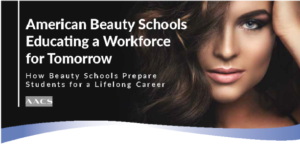Download the full article here.
COVID-19 changed much of American life, especially in the workplace. The economic downturn gave way to the Great Resignation. Workers wanted more control over their lives – clocking in and clocking out working for a large company but for a small paycheck just wasn’t going to cut it anymore.
Beauty schools across the country saw an enrollment crush as people wanted increased flexibility, a chance to learn new marketable skills and a sense of purpose that a rewarding career provides.
Now, these students – mostly women and many women of color – are graduating and headed off to start their own salons or set their own hours as they chart a course for a new, creative career. The plain facts are, 89 percent of our students are women and nearly a third of our students are either African-American or Latino.
However, the likelihood of forthcoming proposed Gainful Employment (GE) rule changes from the U.S. Department of Education next year threatens to cut these career-focused students off their chosen path with new regulations not based in the real-world experiences of the people who work in the beauty industry.
Data compiled by the federal government and beauty schools themselves shows these students graduate at a higher rate than four-year university students, leave school with less debt than their four-year peers and then find placement in their chosen career.
Like the rest of higher education, not all for-profit schools are equal. Some for-profit schools churning out students may well indeed need reform. However, the beauty school sector stands out as a model of success – low cost with the greatest potential for job placement and a ramp up/ramp down earnings potential around which to build a flexible life. More than 1,500 for-profit beauty schools are spread around every state in the Union. The vast majority turn out students immediately prepared for a career in the beauty industry – everything from a hair stylist to a nail technician to a waxing professional. The specialized training doled out by professionals and veterans of the industry readies a new generation of business owners and beauty care providers to do hair, nails and aesthetics for years to come.
For policymakers, the most important aspect of for-profit beauty schools is our success rates. The schools boast an average graduation rate of 76 percent. Four-year university leaders blush with envy at the disparity in graduation rates.
At for-profit beauty schools, our students face an average debt of less than $9,000 based on College Scorecard data for members of the American Association of Cosmetology Schools – far less debt than a student incurs at a four-year institution. And with an average graduation rate of 76 percent and an average job placement rate above 71 percent, student loan default rates remain low. Beauty school students taking out loans to pay for schooling remain a good bet.
More than 1.4 million people work in the beauty industry, with the U.S. Department of Labor’s Bureau of Labor Statistics estimating the sector will grow by 11 percent over the next decade.
